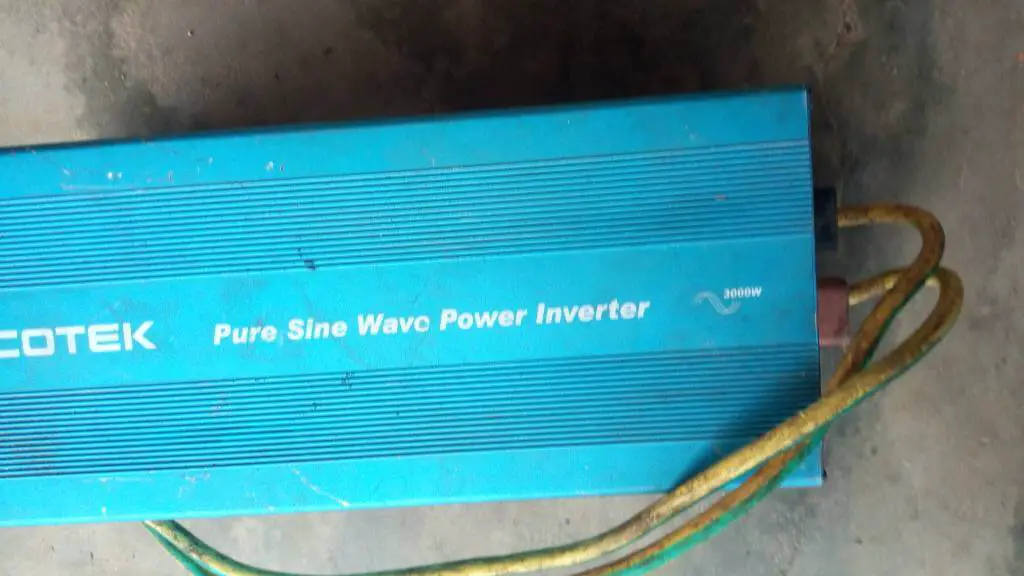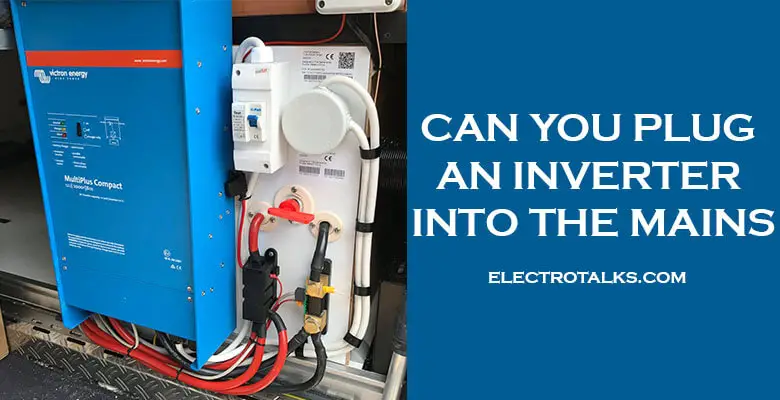“As an Amazon Associate, I earn from qualifying purchases. Without Any Extra Cost to You!”
Living a life without any power outage or loss of connections is a must in our current world as some need it just to function while others require it for work purposes. I am sure you and I know both know people who basically have to work from home because their job is built that way.
And obviously, due to covid, we all had to experience work and resume our lives at home, which evidently makes us understand the importance of constant power. For that reason, we require an inverter to prevent those power cuts or voltage drops, and you may be struggling with its installation. It is pretty normal not to know the regulatory way to plug an inverter into the mains.
Worry not! As I am at your service for this issue.
For your Clarity: What is an inverter, and what is its purpose of it?
Before everything, you need to have a clear understanding of what an inverter is and what type of inverter you use. It is likely that the novice you is handling the wrong device or the wrong type of inverter when the function of that particular inverter is quite different. So, let us go through it.
In simple terms, an inverter is a type of electrical device which lets Direct Current (DC) sources get converted to Alternating Current (AC) sources. This means that the inverter will let you use the devices that have AC electrical source without any interruption. It could be a TV, Fridge, Computer, or any home appliances. The inverter lets you run those devices. There are three types of inverters. Let us go through those as well.
Sine Wave
This type of inverter has to be the most common type of inverter and the one you probably own for your home. It is the purees form of the inverter as it naturally converts DC source to AC source for all types of devices.
Some devices won’t even work without a Sine Wave inverter. A significant necessity it adds is its extended power backup, unlike the other inverters, and it helps in various functions. In terms of pricing, sine wave inverters are the priciest.
Modified Sine Wave
It is similar to sine wave inverters, but unlike sine waves, it cannot run on all types of devices. You may be able to run those devices, but they operate fully due to low efficiency. Your inverter could operate at very high efficiency, but the device you want to use actually runs on 60hz.
Another one is the Square Wave inverter which has become quite obsolete because of its lack of efficiency, safety, and, most importantly, its loud noise. I am pretty sure you don’t own a square wave inverter.
What can happen if you connect the inverter without switching off the main breaker?

It should be an absolute taboo to connect your inverter without switching off the main breaker. Yes, I am talking about the back feed method. You need to turn off the main breaker, and even after doing it, I recommend you to cross-check multiple times and then attempt. You will not only electrocute yourself but as well destroy the main breaker and all of the electric sources there is. You will possibly electrocute someone near your devices.
Finding the right place for the inverter
Before you plug your inverter into the mains, you need to place it in the safest possible area so that no such hazards occur. Based on the inverter you use, it could be placed outdoor or indoors like Grid Tied inverters are better off outdoors.
You must place it at a place where there aren’t any volatile substances, where the temperature is cool because your inverter will generate a lot of electricity, so obviously, the thermals will be high. Not to mention that there shouldn’t be any source of water in that area. Based on the type of inverter, it may not be IP65 waterproof rated.
You also need to check that there is no source of sunlight in it and lastly put it in a spacious place. Keep
How can you plug an inverter into the mains?
Let us now go through how you can plug the inverter into your house mains.
- Disconnect the main circuit breaker. Check thoroughly over it.
- Place the inverter near the main breaker.
- Keep the instruction manual near you as it will have the required pictures so that after explaining, you can have a vivid image of what you will do.
- Be careful: Now connect one end of the cable with the IEC connector and the switch, and then following, you are supposed to bind the other end of the cable to the double switch circuit.
- Again, now from the load, you need to connect the cables to the IEC connector following connect it to the rear output of the inverter.
- Cross-check all these steps multiple times to see if everything is done perfectly.
- I hope you have installed and placed your battery in the right place because now you need to connect the wiring harness to the rear input side of the inverter.
- Now you can turn on your main breaker, and you will see that your inverter is turned on.
How to not plug an inverter into the mains
Since you have been struggling in connecting your inverter to the mains, so I clearly need to enlighten you on what not to do when connecting. Here are a couple of methods you must avoid.
The Suicide Cord
You might easily see it as an option if you have two males to male cables and you are wondering if plugging it on the inverter and then to the main switch leading to connecting to the battery would easily make the inverter turn on. Then, you are utterly wrong as it would make the battery be energized, leading your inverter might blow up all of a sudden.
To check on what is wrong, you need a digital multimeter. You will see that you are getting half of the desired voltages from the ground and neutral from the inverter plugs, as well as half of the voltages from the ground and hot.
Breaker Box Ground
This is if the ground and neutrals are in the breaker box. You will see that in many of the breaker boxes, the ground and the neutral are attached together where you cannot tell which is which. So, then if you plug in the inverter, then your inverter will evidently blow up. As neutral is designed to let current low and ground are not.
Know your Inverter
You could be using a modified sine wave inverter, and you want it to connect it to your home appliances like a Microwave or Fridge because there will be disparities in Voltage, Hertz, and Watts, which will be inefficient in using those devices. You are supposed to get a Sine Wave inverter in this case, as Sine Wave inverters are optimal for all kinds of devices.
Frequently Asked Questions
- What is the difference between a rectifier and an inverter?
Ans: The difference is simple and necessary for you to know. A rectifier converts AC current to DC current and whereas an inverter converts DC current to AC current. Rectifiers are used in Power Supplies to generate electricity from an Alternating current source.
- Which devices run through AC current and need conversion through an inverter?
Ans: Typically, home appliances and the devices at home will need conversion through an inverter as those devices run through an AC source, and you require an inverter to convert the DC to an AC source. A refrigerator is an ideal example as it must require a power inverter to convert the sources.
- What happens if you use two inverters?
Ans: Unless you own those split phase inverters, you absolutely should own or use two inverters as you will either destroy both of the inverters or ruin your home appliances. The wisest choice should be to get one powerful inverter that lets everything connect properly, preferably a 300-watt inverter.
- Which type of inverter do I need?
Ans: You could be owning a modified sine wave inverter and struggling with the lack of usability on all of your devices, so best get a powerful sine wave inverter, and you don’t need to worry about the efficiency of any of your devices.
- Is the ground supposed to carry current?
Ans: Neutral is supposed to carry current, and the ground is not. Things will go haywire if the ground carries current. Ground lets you comprehend if the connections have the right polarity.
Wrap Up!
This will indeed feel a bit overwhelming at the very beginning but based on how I have chronologically asserted every tiny detail. If you go through those with some bit of patience, you should be good to go in, plugging your inverter into the mains. You could be owning a different inverter, or you have been trying the worst method to connect;
I have tried to cover all of these so that you find the utmost clarity in understanding this issue. Once you start knowing what is what, then you might have a lot of these things interesting and grasp them faster. You might even feel like a pro regarding this issue. Thus, I believe you are good to go, not just for yourself but to help others as well.
And, I look forward to seeing you again.
